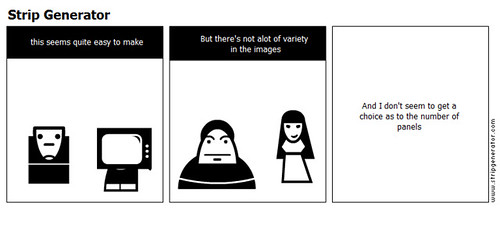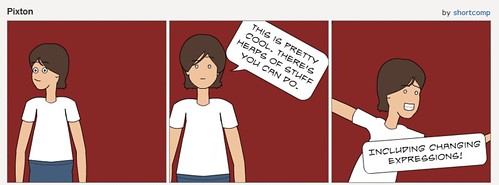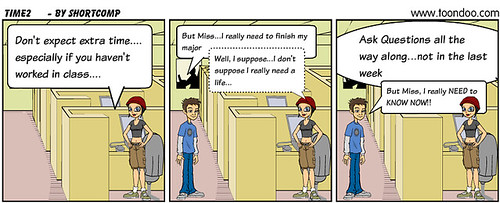Comics in the Classroom
I’ve spent the last couple of days re-reading Scott McLouds’ “Making Comics” which I purchased last year for a unit of my masters that I was doing on Graphical Communciation. I think the book is wonderful, and really the only good book that I’ve seen on the topic. (Feel free to recommend some in the comments!)
But although this book is spectacular, and easy to read, most teachers just want a simple way to make comics that don’t take alot of time. In the past, I’ve given out this scaffold, which is great for students to make a comic based around a topic that you set that helps them give an alternative communication method.
Safety Comic Strip
There are also some great online comic editors. I’ve been using Toondoo for the past few years, and it’s now part of our Automatic Homework policy at school (Make a comic about a topic that you have studied today at school) and it’s a great tool that gives you options for backgrounds and characters, and even different arrancgements from the same characters.

Comic Strip Generator http://stripgenerator.com
A little bit less logical in the sign up process, very easy to use, but very limited in terms of people, and types of framing offered. For example, I couldn’t easily work out how to create a comic in less than 3 frames.

Pixton http://www.pixton.com/home
This is very cool this one, and may alter my first preference of Toon Doo. Firstly, it’s got a great style. Secondly, you can change the characters expressions, body language, etc, to make it a more interesting comic. The only problem I see with it is that you can’t save as a JPEG. And even though they allow you to post to a number of different sites, flickr is not one of them. I was planning on screen capturing the browser screen and importing into an image editor (as you would have to, say if you wanted to print, when I noticed that they had an embed tool:
Note, after publishing, I went back and did the photoshop thing becuase the embed did not work. This is a big pain in the otherwise very easy and highly quality system.

Uses in the classroom:
Using comics to communicate:
- This is a comic on binary numbers that I use to teach students how to convert between number systems. It really makes students understand the concept of binary. It’s also great, because it encourages students to integrate movement into their learning, which is good for memory.
- I use them to make classroom rules a little more fun and easy to remember.
- Look at them as a literacy exercise. Kids will read them.
- Break them up and get students to sequence them for something where the sequence is important to remember, like dates in a history lesson.
- There are some great comic books on particular content based subjects, like Larry Gonick’s Cartoon History of the world, (I’m trying to get a hold of the computer one), and some Shakespeare plays
Get students to make them in order to:
- Communicate a sequence of events
- Make learning fun
- Communicate the important points in a topic
- Communicate difficult concepts
- Simplify a topic into accessible language
- Empathise and personify a topic
- Helps with memory!
It would be great to see some other people comment on how they use comics in the classroom.
